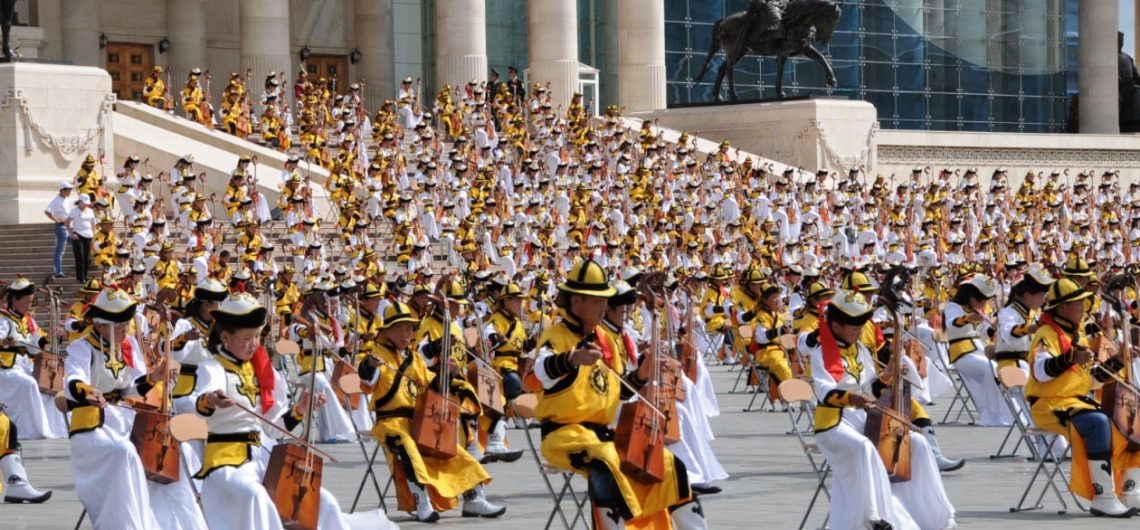In Mongolia, the most popular instrument is indubitably the morin khuur, whose name means, “fiddle with a horse’s head”. It is a square vielle or violin with a long, straight neck, curved at the tip and topped with a sculpted horse’s head. It’s supposed to represent the movement and sounds of a horse.
Every Mongolian family strives to have a morin khuur at home, even though this instrument is hand-made and fairly quite expensive.
In the past, it was simply a ladle for airag on which strings were strung. At that time, the instrument was called “shanagan khuur” (shanaga is a kind of ladle). Later, the body took the shape of a trapeze and the sculptors who made this instrument popular began to decorate it with whimsical figures. That’s why the horse’s head, an animal greatly loved in Mongolia, appeared on the top of the neck. The name was changed to morin khuur. Twelve animals are sculpted on the neck according to the twelve years cycle of the lunar calendar.
The morin khuur has two strings and a bow made from the hair of a horse’s tail. At the top of the morin khuur’s neck, there is a horse’s head, but also four other animals: camel, cow, sheep and goat, because they symbolize wealth and plenty in Mongolia. The morin khuur is the most suitable instrument to accompany the traditional long and short songs and the Mongolian classical dance called biyelgee.
A few years ago, the President of Mongolia declared: “the morin khuur is our national instrument” and the government founded the “Orchestra of the fiddle with a horse’s head”. During the 13th century, this kind of orchestras was very renowned in Mongolia. Today, Mongolians usually use the morin khuur for Naadam, Tsagaan Sar celebrations, great weddings and other important celebrations.

